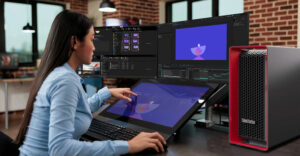
“Modular” and “virtualized” are now buzzwords of the enterpriseserver world, andSun Microsystems is aiming to offer both with its rollout of the Blade 6000 Modular System. The line of servers includes models that run onIntel’s and AMD’s processors, as well as on Sun’s.
Memory installed in the high-end models of the 6000 series doubles that of servers in the previous line and of competing products. The servers also have double the I/O (in-out) capacity of both competing blades and rackmount servers.
Capacity Grows
“Doubling is good,” Frank Gillett, vice president of Forrester Research, told TechNewsWorld. The additional capacity will be especially useful in environments where virtualized servers are employed.
Data centers housing large databases will also benefit from the new products’ increased capacity and throughput, added Gillett. However, enterprises may not house their databases on this line, Forrester principal analyst James Staten told TechNewsWorld. Customers most likely to upgrade to the new line comprise those already using Sun rackmount servers, rather than companies running blade servers from other vendors, he noted.
Not a Quantum Leap
While the increased capacity of the servers is welcome, that design was intended to be part of regular improvements to the gear, rather than a quantum leap in server technology, said Gillett. Other server vendors will likely introduce competing products within the next six months, he predicted.
Servers in the 6000 line support the Solaris, Windows and Linux operating systems, said Sun. Early access and beta customers include Oregon State University and the University of Notre Dame.
The Blade 6000 servers are available now. Entry-level pricing starts at US$4,995, according to the company, for the server chassis. The Sun Blade T6300 runs $5,995 per server module, while the lower-end X6220 and X6250 server modules cost $3,695 and $3,995 per server module, respectively.





















































